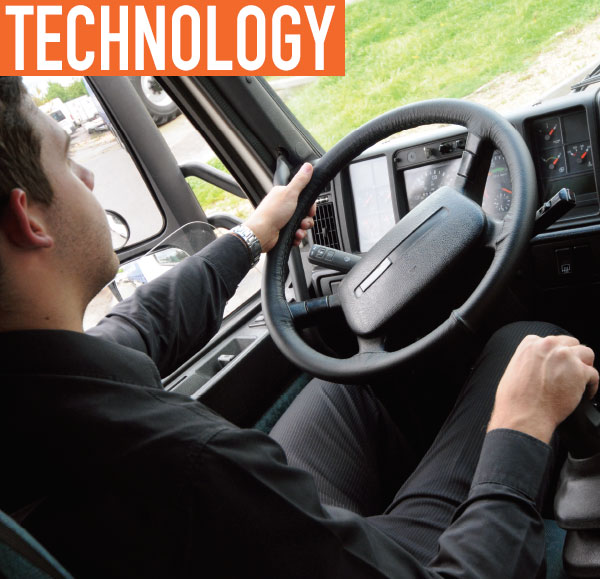In the first part of this series, we discussed the importance of coaching and ensuring everyone in the organization is on the same page before starting the coaching process as part of a fleet’s overall safety program. This establishes consistency in safety messaging and a standard outlook to always practice safe driving habits. However, once a fleet starts coaching drivers, it’s important to realize that video triggered by an event is only the first step in the review process. After a video is triggered, an expert analyst needs to review the event to verify and quantify the risk.
With today’s buzzwords—artificial intelligence (AI), machine learning, and computer vision—fleets rush to rely on data-driven technology to make life-saving decisions. Unfortunately, AI-driven analysis is not yet as effective or reliable as human review. People continue to provide verifiable results and actionable analyses that technology isn’t able to provide at this point. Having the expert review is essential to guaranteeing the process is unbiased and all driver behaviors are measured similarly and consistently. It also confirms scoring and prioritization of the riskiest drivers align with the company’s specific safety policies.
MANAGED SERVICE
Ultimately, expert review as part of a managed service program eliminates the need for safety managers to review and coach every event, saving fleets time and enabling coaches to focus on the riskiest behaviors, drivers, and sites. A managed service provides the information necessary for the prescribed coaching workflow, aiding in continual improvement of drivers and bottom-line results.
A managed service program supports a company’s coaching efforts by providing the ability to coach thousands of drivers and narrowing in on the ones that put themselves and the fleet at grave risk. How? With the managed service, a team of experts does the “heavy lifting” of reviewing, scoring, and prioritizing events so safety managers can focus efforts on coaching those drivers who need it most.
Outside of identifying poor and unsafe driving habits, the program also recognizes safe driving habits so that drivers are rewarded appropriately. This helps build rapport between coaches, managers, and drivers, in turn helping keep drivers happy and driving with the company for many years. With a performance measurement guide, fleets are also able to gauge the success of efforts made.
3 STEPS TO SUCCESS
As mentioned in the first part of the series, it’s imperative to follow a predetermined process to ensure that all drivers are coached—and measured—in a timely, unbiased, and consistent manner. An outline of the three steps to coaching effectiveness is below:
1. Prepare—Coaches should keep the below points in mind ahead of each coaching session:
a. Outline what needs to be discussed with the driver.
b. Have the video ready to review with the driver and talking points about what should be done differently.
c. Remember the tone of the message and how the information is presented.
d. Be prepared with safety messaging should the driver have questions.
All of these steps establish a level of professionalism so that the driver realizes the importance of the coaching sessions.
2. Coach—The best way to begin a coaching session is to show the driver his/her video and ask them what they see. Allowing them the chance to explain what occurred, where they went wrong, and then discuss the situation helps ensure the driver fully understands and is clear about why the coaching session occurred.
3. Summarize—Before the coaching session concludes, review the main points of discussion with the driver. Safety managers and coaches also need to make note of the coaching session as it’s easy to forget what was discussed and the agreed next steps for safer driving. With notes in hand, it’s much easier to remind the driver should the behavior continue and need further coaching.
MEASURE THE EFFECT
Once coaching begins, it’s important to measure the effectiveness of efforts made to make sure revisions are not needed. The key to driving program results are analytics and setting Key Performance Indicators (KPIs). The three KPIs essential to managing a program and ensure focus is on the right driver at the right time are Safety Score, Percent of Events Coached, and Coaching Impact on Score.
These KPIs enable the fleet to better understand areas of the coaching program that improve overall safety and areas that still need refining. For example, is coaching effectiveness increasing or are coaches not properly preparing for sessions? Are drivers’ Safety Scores going up or down? When fleets hone in on specific KPIs that need the most development, they make it easy to operationalize—saving managers time by having them focus on the critical areas.
The impact of this approach is evident—fleets often experience collision frequency reductions of 50% or greater in the first year of deployment. Furthermore, they continue to see results in subsequent years because they have a standardized, consistent approach drivers rely on.
Next month, we’ll continue our discussion on analytics and look at tips to take your driver improvement program to the next level.
FOR MORE INFORMATION
To gain more insights into coaching, download the SmartDrive’s eBook, “Coach Your Drivers to Safety and Success,” visit www.smartdrive.net.
MODERN WORKTRUCK SOLUTIONS:
OCTOBER 2019 ISSUE
Did you enjoy this article?
Subscribe to the FREE Digital Edition of Modern WorkTruck Solutions magazine.





